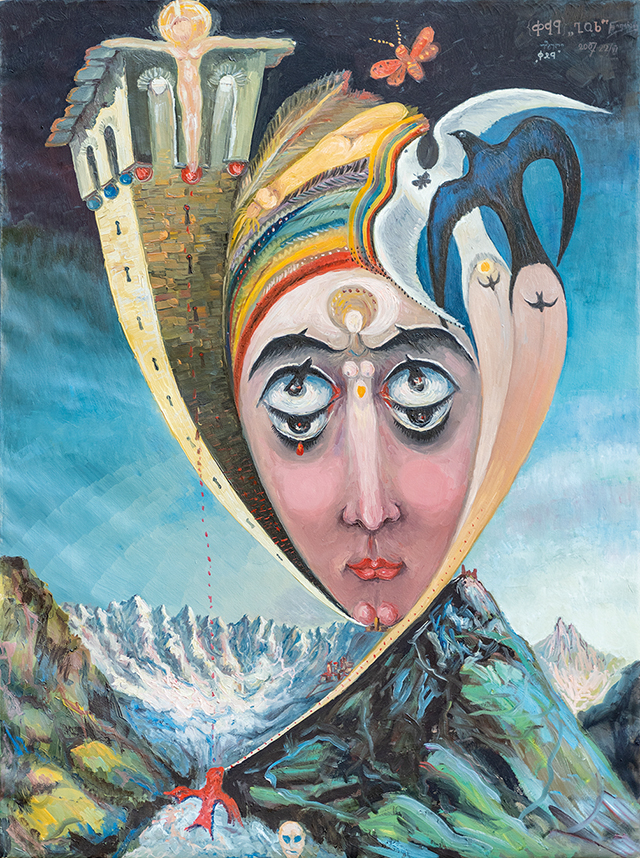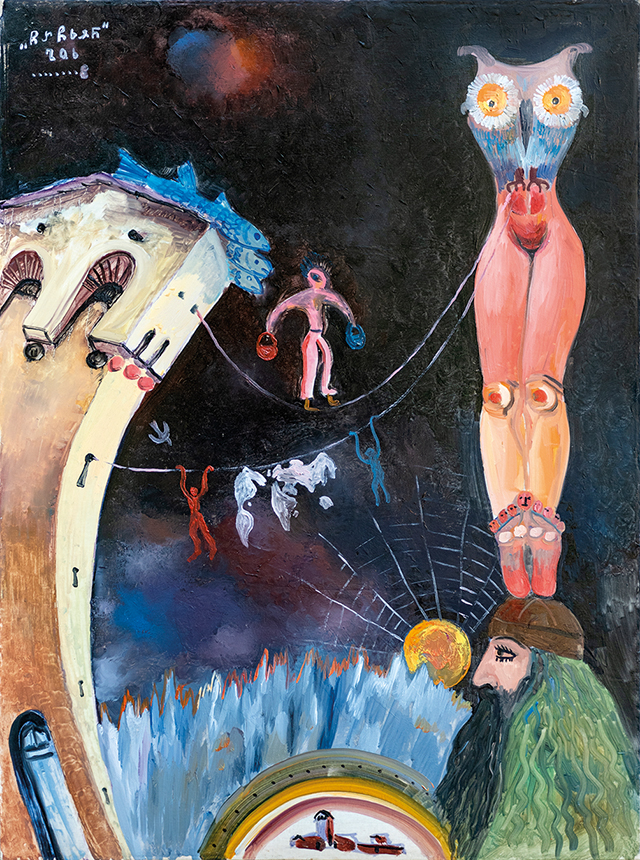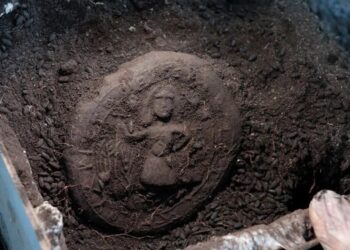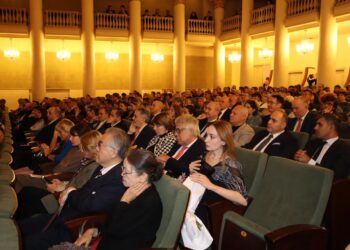We are almost at the end of another year, one which marked many changes in our lives and on the planet as a whole. Also this year, some very well-known artists passed away, and to recognize them, GEORGIA TODAY, in collaboration as BI Auction, is beginning a new series of interviews ‘With Respect.’
The first interview is about Pridon Nizharadze (1944-2020). Ika Bokuchava, owner of IArt and Co-Founder of BI Auction, told us about him.
Pridon Nizharadze was born on August 25, 1944, in the highest settlement of Svaneti, in the village of Ushguli.
He started painting at pre-school age, drawing with a pencil, and on snow, and with chalks on stones. After graduating from school, Nizharadze was drafted into the army. He studied at the Mining Technical School.
His dream was to study at the Tbilisi Academy of Arts, which came true quite late in his life, at 23, and that is where his conflict with the Soviet regime and professional dogmas began.
He also spent time in a psychiatric hospital.
After graduating from the art academy, Pridon returned to Ushguli, where he spent the rest of his life. He worked at the local school, teaching drawing, painting, and astronomy. Then he worked in the UNESCO World Heritage Site – Chazhashi Museum, where he was given the opportunity to explore more deeply the religious and culturally unique treasures kept in Svaneti.

Despite graduating from the academy, Pridon Nizharadze considered himself a self-taught artist. “They have attributed my works to the transcendental genre, I do not even know where this word comes from,” he argued.
His creative work can be divided into very different stages. In the early period of his work, we find wonderful, classic landscapes and portraits of Ushguli. Then we can find mystical tones in these landscapes. His painting then became religious – “religious and not ecclesiastical.”
He noted the Tower of Babel was his painted Svan towers. It is as if after the flood, Svaneti became the land of Shinar, as if the world began to burn and build from there. Mankind’s path from heaven to hell – the world from childhood to adulthood unprocessed, with “homemade” spiritualism and artisanal philosophy brought to us. In his “Silence” he created noisy, rough, tender, marginal art.

It is difficult to understand his compositions without having him by your side to explain, although there is no doubt that each of his works is the result of his thoughts on the order of the world, on different religions, traditions, history, and the present. The same goes for his poems.
At the time of creation, his works were unpopular and even caused controversy with local officials.
Nevertheless, the author managed to create unique paintings that both family members and visitors at first perceived with fear and distrust, and then could not hide their admiration for. Later, after the opening of the borders, Pridon Nizharadze’s workshop turned into one of the most remarkable spaces in Ushguli, where the flow of Georgian and foreign visitors did not stop all year long.
Although the door to his workshop was always open, getting there and contacting the author was not easy. The artist himself chose the people with whom he wanted to share his creations, read his poems to, and dialogue with him remained an unforgettable impression in the memories of his visitors.
In 1998, French director Jean Boggio Pola released a full-length documentary film dedicated to the work of Pridon Nizharadze. In 2019, the first personal exhibition of the author was held at the Tbilisi History Museum – Caravanserai, which the author could not attend.
Pridon Nizharadze died on November 13, 2020.
***
IArt Gallery at 13 Uznadze Street aims to present important and interesting aspects of Georgian fine arts. From November 30 to December 15, IArt Gallery hosts the works of Pridon Nizharadze. In addition to preparing for the exhibition, a TV film is being made on the work of Pridon Nizharadze, a complete description of Pridon Nizharadze’s works, filmed in Ushguli, as well as from private collections. A complete catalog of his work has been published. The exhibition of the gallery presents all the important works of the author, reflecting different periods. After the end of the exhibition, the main part of the works will be housed in the Pridon Nizharadze House-Museum in Ushguli.
By Team GT















